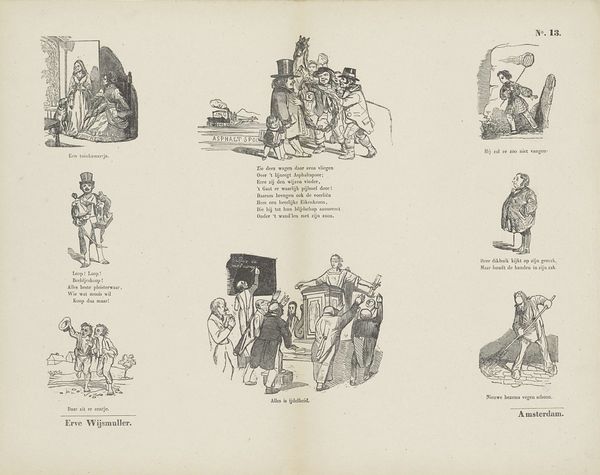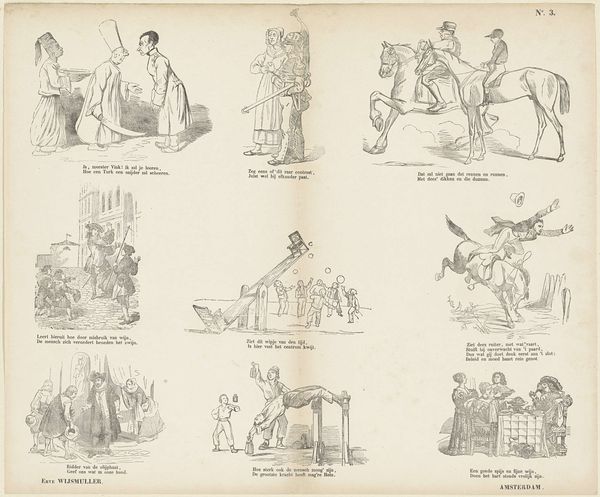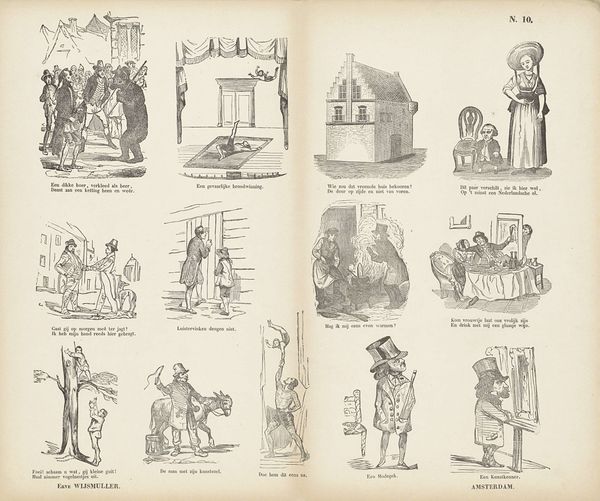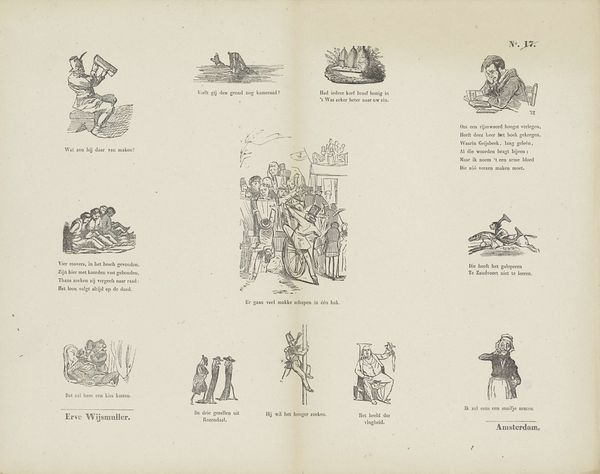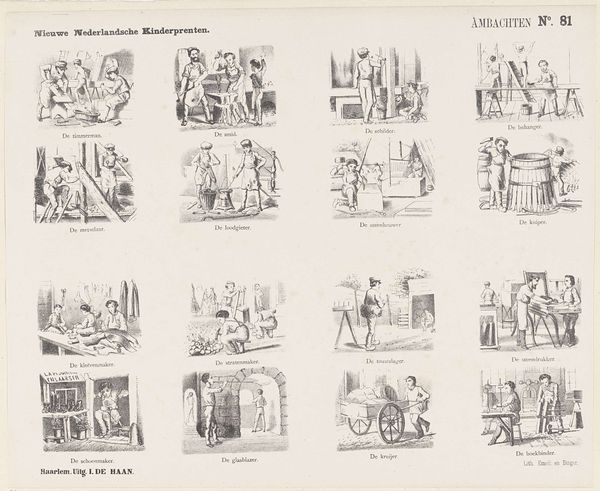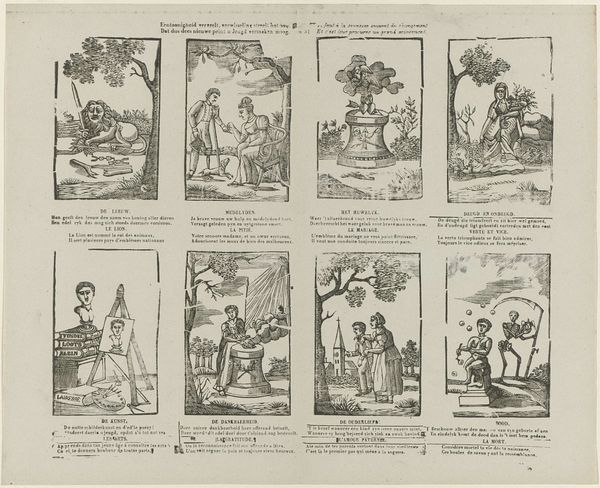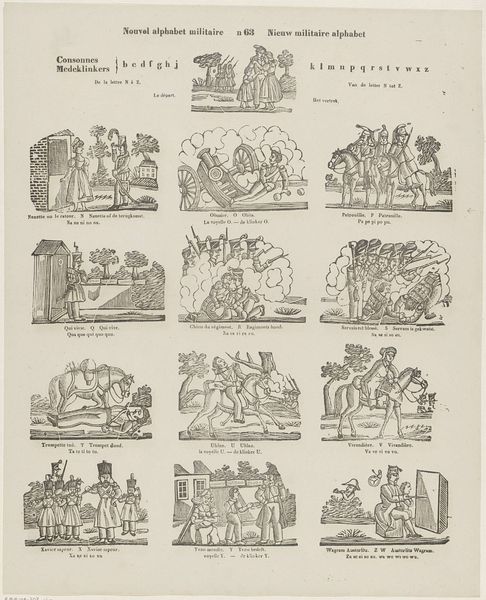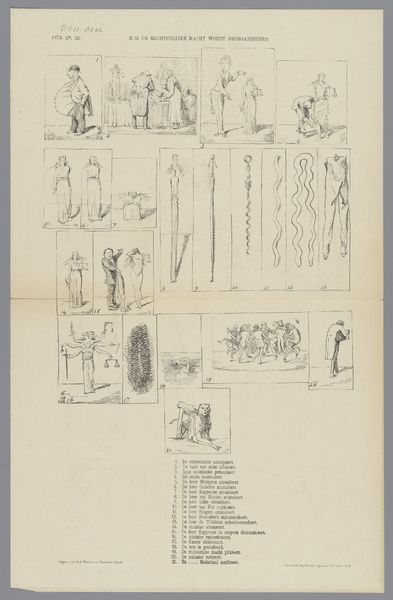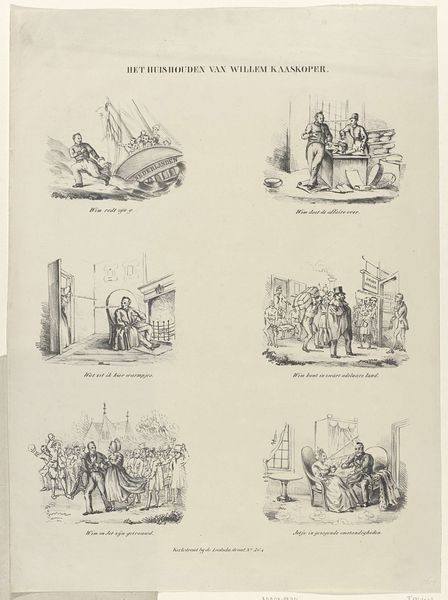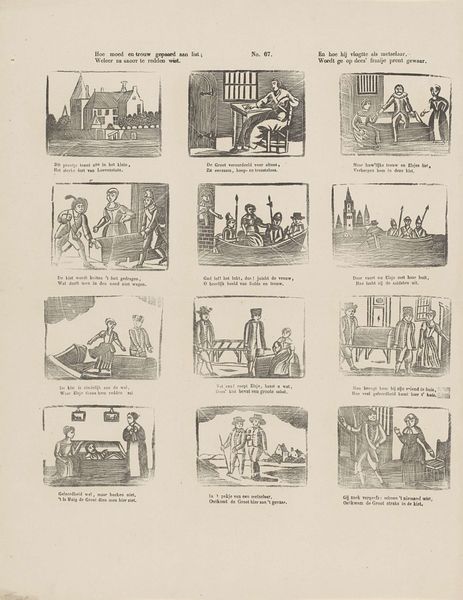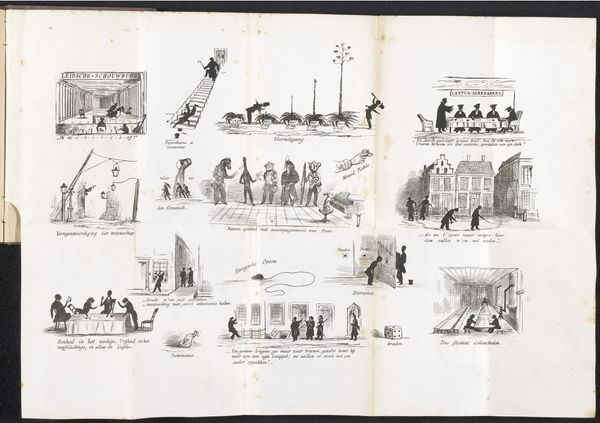
drawing, print, etching, ink, engraving
#
drawing
#
narrative-art
# print
#
etching
#
ink
#
genre-painting
#
history-painting
#
engraving
Dimensions: height 331 mm, width 401 mm
Copyright: Rijks Museum: Open Domain
Curator: This is "Verschillende voorstellingen," or "Various Scenes," a print composed of etching, engraving, and ink, created at some point between 1828 and 1913 by Erve Wijsmuller. It currently resides here at the Rijksmuseum. Editor: Well, that's quite a busy page! Visually, it feels like a study in miniature compositions—nine separate vignettes arranged somewhat haphazardly, each with its own tonal range and suggestion of narrative. Curator: Indeed. Each of these scenes reflects the everyday life and historical narratives of the Netherlands and its colonies. Note the blend of genre painting, history painting, and scenes from abroad, offering a multifaceted perspective on Dutch society. Editor: The recurring motif of figures interacting—or perhaps *failing* to meaningfully interact—jumps out. Look at the detached poses, the averted gazes in several scenes. What could Wijsmuller be suggesting about social relations here? Curator: We can explore that by examining the details—consider the image of colonial production contrasted with the image of domestic Dutch commerce. Are we seeing a subtle critique of power dynamics, wealth disparity, even forced labor? Editor: Interesting observation. However, I’m drawn to the stylistic treatment. The reliance on strong lines, cross-hatching for shadow, and the flat, almost diagrammatic rendering creates a very particular visual language. There's an emotional coolness here that seems quite intentional. Curator: That could also reflect the intended audience and mode of consumption. These prints were often part of larger publications and were designed to circulate widely within a specific social sphere, which no doubt influenced Wijsmuller’s approach. It’s hard not to think of newspapers. Editor: A valid point. And taken collectively, this organization of contrasting narratives could be viewed as a deliberate composition that draws parallels or invites subtle critique on historical forces in Dutch society at this time. Curator: Yes. We should encourage people to study and discover the network of symbols in this print, as there is certainly much to unravel about Wijsmuller’s message. Editor: Agreed, a detailed examination can really draw us into understanding these miniature social and historical portraits.
Comments
No comments
Be the first to comment and join the conversation on the ultimate creative platform.
